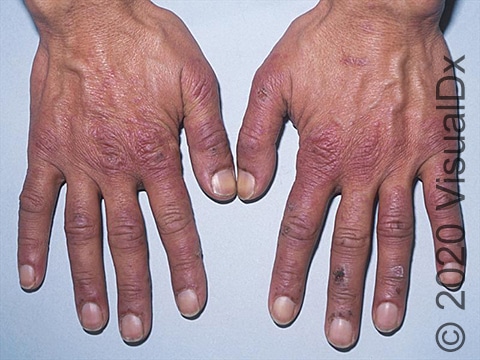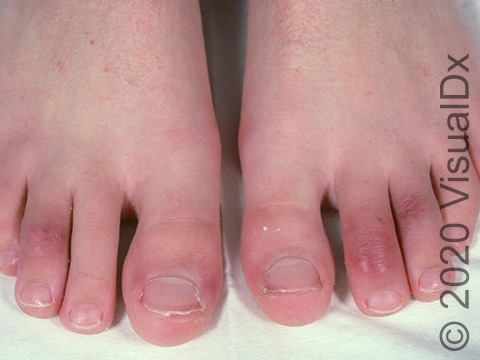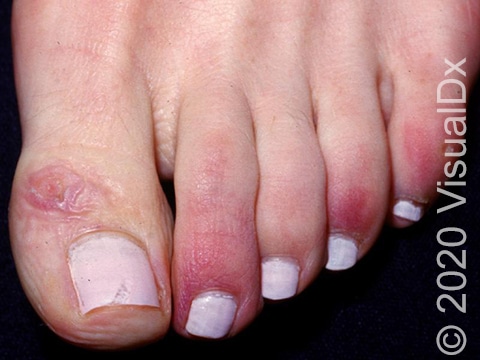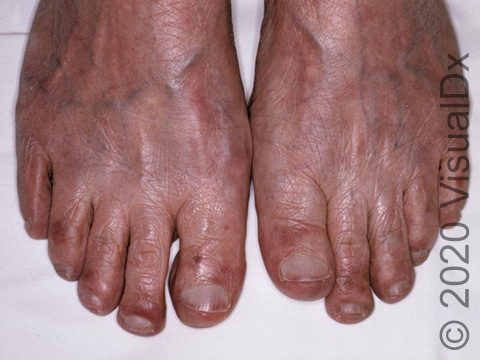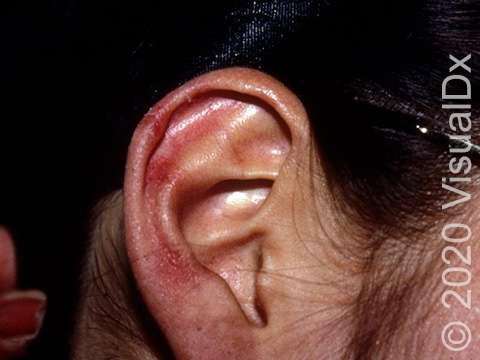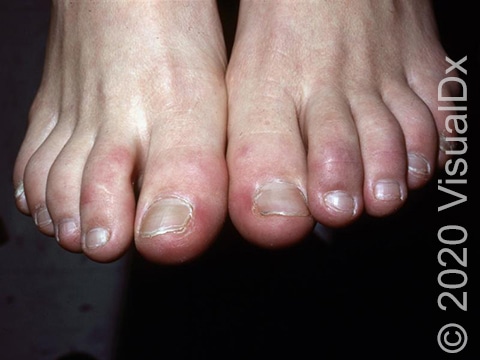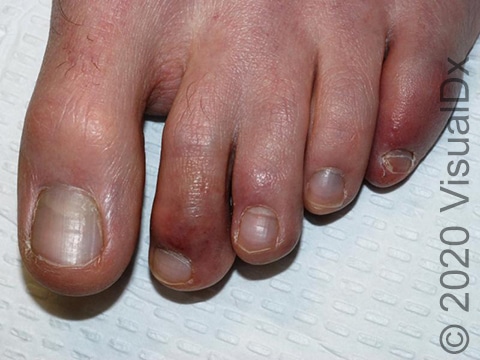COVID Toes and Chilblains
Chilblains, also known as pernio, are painful, swollen papules (small, solid bumps) that appear on exposed skin such as the fingers, nose, or toes in cold, damp weather. A rash called “COVID toes” (pseudo-chilblains), which can occur in coronavirus disease 2019 (COVID-19), is similar in appearance. Like typical chilblains, it can appear on the fingers as well as the toes.
Who's At Risk?
- Children, young-to-middle-aged women, people who are underweight or have poor circulation, and people with an autoimmune disease have an increased risk of getting typical chilblains. Wearing clothing that exposes the skin to cold air also increases the likelihood of chilblains.
- Both children and adults can get COVID toes.
Signs & Symptoms
- Red or purple, swollen papules appear on the feet and hands, including the toes and fingers. Sometimes the surrounding skin turns purple, or occasionally blue. You may see blisters or scabs. The skin may be tender to the touch and painful. The skin may burn or itch.
- COVID-19-related lesions of the toes or fingers can appear anytime during the year. It is unclear why COVID toes occur, but people are likely still infectious with COVID-19 at the time. Frequently, COVID toes are the only symptom of COVID-19. The skin changes can last for weeks and will resolve with the illness.
- Typical chilblains commonly appear in cold, damp weather. Cold weather causes the tiny blood vessels in the fingers, toes, and nose to constrict. When these areas warm up again, the blood vessels open and there is swelling and inflammation. Chilblains following cold exposure last about 1-2 weeks.
Self-Care Guidelines
- If you or family members develop red or purple lesions on your fingers or toes, contact your medical professional about testing for COVID-19.
- Acetaminophen can help improve pain or tenderness associated with chilblains.
- Applying moisturizing cream to the affected areas can reduce itching.
- For chilblains due to cold weather, rewarm the affected areas gently without the use of direct heat.
- Avoid smoking, as it can make chilblains worse.
Treatments
Your medical professional may:
- Order COVID-19 testing.
- Do blood tests to check for any underlying medical conditions.
- Recommend a biopsy (removing a small sample of skin for further evaluation under a microscope) if your diagnosis is in question.
- Recommend topical corticosteroid cream to help resolve associated inflammation and itch.
- Recommend medication that lowers blood pressure that can open the blood vessels and increase blood flow in the case of typical chilblains.
- Prescribe antibiotics if the skin becomes infected.
Visit Urgency
See a medical professional if:
- You suspect you have COVID-19. Call and ask for instructions on how to best seek medical care in your community.
- Fever, cough, diarrhea, or other flu-like symptoms develop.
- The skin blisters or breaks down, resulting in open sores.
- The condition worsens after self-care.
- You suspect an underlying condition is causing the chilblains, such as lupus.
References
Bolognia J, Schaffer JV, Cerroni L. Dermatology. 4th ed. Philadelphia, PA: Elsevier; 2018.
James WD, Elston D, Treat JR, Rosenbach MA. Andrew’s Diseases of the Skin. 13th ed. Philadelphia, PA: Elsevier; 2019.
Kang S, Amagai M, Bruckner AL, et al. Fitzpatrick’s Dermatology. 9th ed. New York, NY: McGraw-Hill Education; 2019.
Last modified on June 17th, 2024 at 10:45 am

Not sure what to look for?
Try our new Rash and Skin Condition Finder

